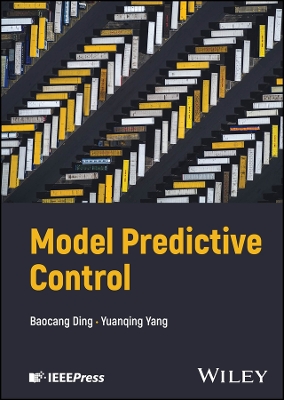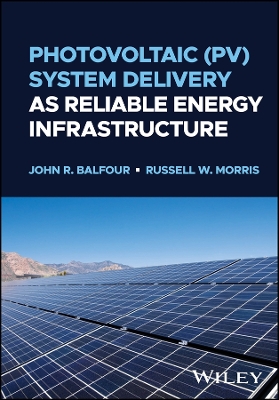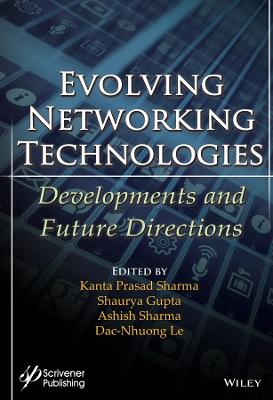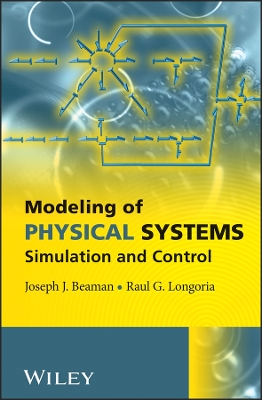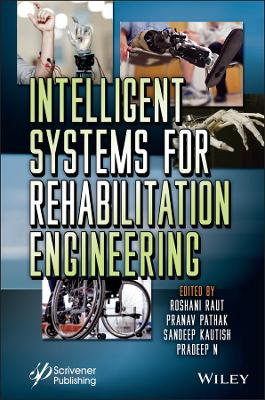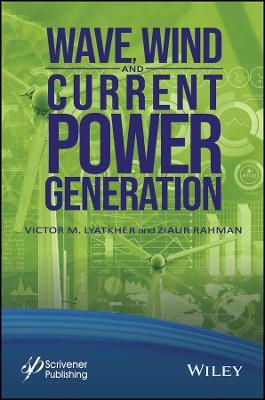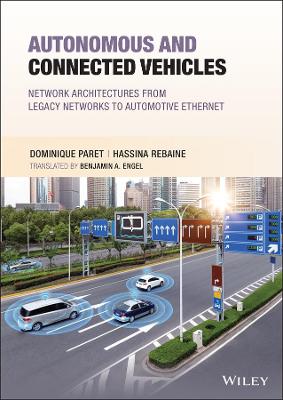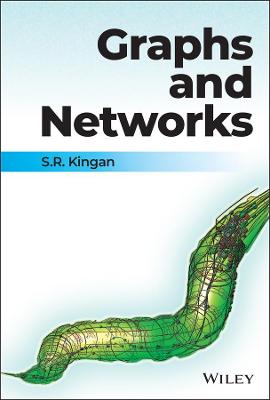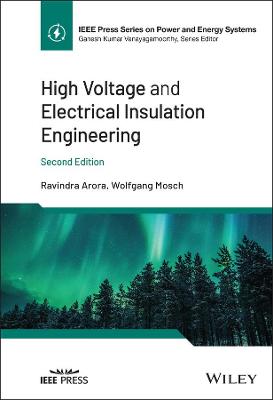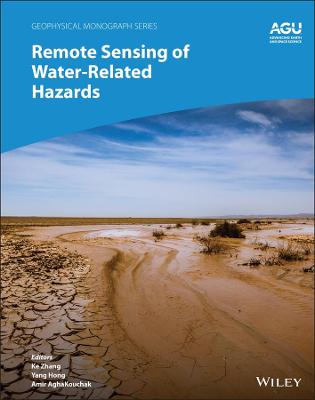Spectrum Sharing
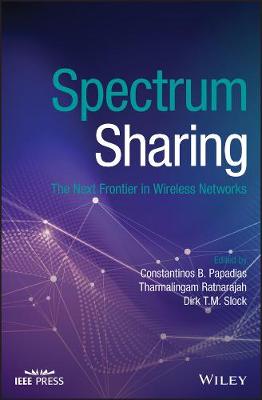 -15%
portes grátis
-15%
portes grátis
Spectrum Sharing
The Next Frontier in Wireless Networks
Ratnarajah, Tharmalingam; Papadias, Constantinos B.; Slock, Dirk T. M.
John Wiley & Sons Inc
04/2020
456
Dura
Inglês
9781119551492
15 a 20 dias
1002
List of Contributors xxi
Preface xxv
Abbreviations xxix
1 Introduction: From Cognitive Radio to Modern Spectrum Sharing 1
Constantinos B. Papadias, Tharmalingam Ratnarajah, and Dirk T.M. Slock
1.1 A Brief History of Spectrum Sharing 1
1.2 Background 3
1.3 Book overview 5
1.4 Summary 14
2 Regulation and Standardization Activities Related to Spectrum Sharing 17
Markus Mueck, Maria Dolores (Lola) Perez Guirao, Rao Yallapragada, and Srikathyayani Srikanteswara
2.1 Introduction 17
2.2 Standardization 19
2.2.1 Licensed Shared Access 19
2.2.2 Evolved Licensed Shared Access 21
2.2.3 Citizen Broadband Radio System 24
2.2.4 CBRS Alliance 25
2.3 Regulation 28
2.3.1 European Conference of Postal and Telecommunications Administrations 28
2.3.2 Federal Communications Commission 29
2.3.3 A Comparison: (e)LSA vs CBRS Regulation Framework 30
2.3.4 Conclusion 31
References 32
3 White Spaces and Database-assisted Spectrum Sharing 35
Andrew Stirling
3.1 Introduction 35
3.2 Demand for Spectrum Outstrips Supply 36
3.2.1 Making Room for New Wireless Technology 36
3.2.2 Unused Spectrum 37
3.3 Three-tier Access Model 38
3.3.1 Secondary Users: Exploiting Gaps left by Primary Users 39
3.3.2 Passive Users: Vulnerable to Transmissions in White Space Frequencies 39
3.3.3 Opportunistic Spectrum Users 40
3.4 What is Efficient Use of Spectrum? 40
3.4.1 Broadcasters prefer Large Coverage Areas with Lower Spectrum Reuse 41
3.4.2 ISPs Respond to Growing Bandwidth Demand from Subscribers 41
3.4.3 Protection of Primary Users Defines the Scope for Sharing 42
3.5 Tapping Unused Capacity: the Evolution of Spectrum Sharing 43
3.5.1 Traditional Coordination is a Slow and Expensive Process 44
3.5.2 License-exempt Access as the Default Spectrum Sharing Mechanism 44
3.5.3 DSA offers Lower Friction and more Scalability 45
3.5.3.1 Early days of DSA 46
3.5.3.2 CR: Towards Flexible, Adaptive, Ad Hoc Access 46
3.5.4 Spectrum Databases are Preferred by Regulators 47
3.6 Determining which Frequencies are Available to Share: Technology 48
3.6.1 CR: Its Original Sense 48
3.6.2 DSA is more Pragmatic and Immediately Applicable 48
3.6.3 Spectrum Sensing 48
3.6.3.1 Hidden Nodes: Limiting the Scope/Certainty of Sensing 49
3.6.3.2 Overcoming the Hidden Node Problem: a Cooperative Approach 49
3.6.4 Beacons 50
3.6.5 Spectrum Databases used with Device Geolocation 51
3.7 Implementing Flexible Spectrum Access 53
3.7.1 Software-defined Radio Underpins Flexibility 53
3.7.2 Regulation Needs to Adapt to the New Flexibility in Radio Devices 54
3.8 Foundations for More Flexible Access in the Future 54
3.8.1 Finer-grained Spectrum Access Management 54
3.8.2 More Flexible License Exemption 54
3.8.2.1 Towards a UHF Spectrum Commons or Superhighway 55
References 56
Further Reading 57
4 Evolving Spectrum Sharing Methods, Standards and Trials: TVWS, CBRS, MulteFire and More 59
Dani Anderson, K.A. Shruthi, David Crawford, and Robert W. Stewart
4.1 Introduction 59
4.2 TV White Space 59
4.2.1 Overview 59
4.2.2 Operating Standards 61
4.2.3 Overview of TVWS Trials and Projects 63
4.3 Emerging Shared Spectrum Technologies 66
4.3.1 Introduction 66
4.3.2 CBRS 67
4.3.3 Other Shared Spectrum LTE Solutions 70
4.4 Conclusion 73
References 73
5 Spectrum Above Radio Bands 75
Abhishek K. Gupta and Adrish Banerjee
5.1 Introduction and Motivation for mmWave 75
5.2 mmWave Communication: What is Different? 76
5.2.1 Distinguishing Features 76
5.2.2 Implications 76
5.2.3 Opportunity and Need for Sharing 77
5.3 Bands in Above-6GHz Spectrum 78
5.3.1 26-GHz band: 24.25-27.5GHz 79
5.3.2 28-GHz band: 27.5-29.5GHz 79
5.3.3 32-GHz band: 31.8-33.4GHz 79
5.3.4 40-GHz band: 37-43.5GHz 79
5.3.4.1 40-GHz lower band 80
5.3.4.2 40-GHz upper band 80
5.3.5 64-71-GHz band 80
5.4 Spectrum Sharing over mmWave Bands 80
5.4.1 Factors Determining Sharing vs No Sharing 80
5.4.1.1 Directionality 81
5.4.1.2 Deployment and Blockage Density 81
5.4.1.3 Traffic Characteristics 82
5.4.1.4 Amount of Sharing 82
5.4.1.5 Inter-operator Coordination 82
5.4.1.6 Sharing of Other Resources 83
5.4.1.7 Multi-user Communication 84
5.4.1.8 Technical vs Financial Gains 84
5.5 Spectrum Sharing Options for mmWave Bands 84
5.5.1 Exclusive Licensing 84
5.5.2 Unlicensed Spectrum 85
5.5.2.1 Hybrid Spectrum Access 86
5.5.3 Spectrum License Sharing 87
5.5.3.1 Uncoordinated Sharing of Spectrum Licenses 87
5.5.3.2 Restricted Sharing of Spectrum Licenses 88
5.5.4 Shared Licenses 90
5.5.4.1 Spectrum Pooling 90
5.5.4.2 Partial or Fully Coordinated 90
5.5.4.3 Common Database 91
5.5.4.4 Sensing/D2D Communication-based Coordination 91
5.5.5 Secondary Licenses and Markets 91
5.5.5.1 Primary/Secondary Markets 92
5.5.5.2 Third-party Markets 92
5.5.6 Increasing the utilization of spectrum 92
5.6 Conclusions 93
References 93
6 The Licensed Shared Access Approach 97
Antonio J. Morgado
6.1 Introduction to Spectrum Management 97
6.2 The Dawn of Licensed Shared Access 98
6.2.1 The LSA Regulatory Environment 99
6.2.2 LSA/ASA in the 2300-2400 MHz band 101
6.3 An Improved LSA Network Architecture 103
6.4 Operation of the Improved Architecture in Dynamic LSA Use Cases 106
6.4.1 Railway Scenario 107
6.4.2 Macro-cellular Scenario 109
6.4.3 Small Cell Scenario 112
6.5 Summary 115
References 116
7 Collaborative Sensing Techniques 121
Christian Steffens and Marius Pesavento
7.1 Sparse Signal Representation 123
7.2 Sparse Sensing 125
7.3 Collaborative Sparse Sensing 128
7.3.1 Coherent Sparse Reconstruction 129
7.3.2 Non-Coherent Sparse Reconstruction 131
7.4 Estimation Performance 134
7.4.1 Comparison of Centralized, Distributed, and Collaborative Sensing 134
7.4.2 Source Localization 136
7.5 Concluding Remarks 138
References 139
8 Cooperative Communication Techniques for Spectrum Sharing 147
Faheem Khan, Miltiades C. Filippou, and Mathini Sellathurai
8.1 Introduction 147
8.2 Distributed Precoding Exploiting Commonly Available Statistical CSIT for Efficient Coordination 149
8.2.1 Problem Formulation 150
8.2.2 Distributed Statistically Coordinated Precoding 151
8.2.3 Performance Evaluation 153
8.3 A Statistical Channel and Primary Traffic-aware Cooperation Framework for Optimal Service Coexistence 155
8.3.1 Joint Design of Spectrum Sensing and Reception for a SIMO Hybrid CR System 156
8.3.1.1 Problem Formulation and Solution Framework 158
8.3.1.2 Performance Evaluation 159
8.3.2 Throughput Performance of Sensing-optimized Hybrid MIMO CR Systems 161
8.3.2.1 Problem Formulation and Solution Framework 161
8.3.2.2 Performance Evaluation 162
8.4 Summary 164
References 165
9 Reciprocity-Based Beamforming Techniques for Spectrum Sharing in MIMO Networks 169
Kalyana Gopala and Dirk T.M. Slock
9.1 Multi-antenna Cognitive Radio Paradigms 169
9.1.1 Spatial Overlay: MISO/MIMO Interference Channel 170
9.1.2 Spatial Underlay 170
9.1.3 Spatial Interweave 170
9.2 From Multi-antenna Underlay to LSA Coordinated Beamforming 171
9.2.1 CoBF and CSIT Discussion 171
9.2.2 Some LoS Results 173
9.2.3 Noncoherent Multi-user MIMO Communications using Covariance CSIT 174
9.3 TDD Reciprocity Calibration 175
9.3.1 Fundamentals 175
9.3.2 Diagonality of the Calibration Matrix 178
9.3.3 Coherent and Non-coherent Calibration Scheme 178
9.3.4 UE-aided vs Internal Calibration 179
9.3.5 Group Calibration System Model 179
9.3.6 Least-squares Solution 181
9.3.7 A Bilinear Model 181
9.4 MIMO IBC Beamformer Design 182
9.4.1 System Model 182
9.4.2 WSR Optimization via WSMSE 182
9.4.3 Naive UL/DL Duality-based Beamformer Exploiting Reciprocity 183
9.5 Experimental Validation 184
9.6 Conclusions 188
References 188
10 Spectrum Sharing with Full Duplex 191
Sudip Biswas, Ali Cagatay Cirik, Miltiades C. Filippou, and Tharmalingam Ratnarajah
10.1 Introduction 191
10.2 Transceiver Design for an FD MIMO CR Cellular Network 192
10.2.1 System Model 192
10.2.1.1 Signal and Channel Model 192
10.2.1.2 SI Cancellation 194
10.2.1.3 MSE of the Received Data Stream 195
10.2.2 Joint Transceiver Design 196
10.2.3 Imperfect CSI and Robust Design 197
10.2.3.1 CSI Acquisition 197
10.2.3.2 CSI Modeling 198
10.2.3.3 Robust Transceiver Design 198
10.2.4 Numerical Results 200
10.3 Transceiver Design for an FD MIMO IoT Network 203
10.3.1 System Model 204
10.3.1.1 Signal and Channel Model 204
10.3.1.2 SI Cancellation 205
10.3.1.3 MSE of the Received Data Stream 206
10.3.2 Joint Transceiver Design 206
10.3.3 Imperfect CSI and Robust Design 207
10.3.4 Numerical Results 208
10.4 Summary 209
References 210
Appendix for Chapter 10 211
10.A.1 Useful lemmas 211
11 Communication and Radar Systems: Spectral Coexistence and Beyond 213
Fan Liu and Christos Masouros
11.1 Background and Applications 213
11.1.1 Civilian Applications 213
11.1.2 Military Applications 214
11.2 Radar Basics 214
11.3 Radar Communication Coexistence 216
11.3.1 Opportunistic Access 216
11.3.2 Precoding Designs 216
11.3.2.1 Interfering Channel Estimation 216
11.3.2.2 Closed-form Precoding 218
11.3.2.3 Optimization-based Precoding 219
11.4 Dual-functional Radar Communication Systems 221
11.4.1 Temporal and Spectral Processing 221
11.4.2 Spatial Processing 222
11.5 Summary and Open Problems 225
References 226
12 The Role of Antenna Arrays in Spectrum Sharing 229
Constantinos B. Papadias, Konstantinos Ntougias, and Georgios K. Papageorgiou
12.1 Introduction 229
12.2 Spectrum Sharing 229
12.2.1 Spectrum Sharing from a Physical Viewpoint 229
12.2.2 Spectrum Sharing from a Regulatory Viewpoint 231
12.3 Attributes of Antenna Arrays 233
12.4 Impact of Arrays on Spectrum Sharing 234
12.4.1 Spectrum Sensing 234
12.4.2 Shared Spectrum Access 234
12.5 Antenna-Array-Aided Spectrum Sharing 235
12.5.1 System Setup 235
12.5.2 Assumptions 236
12.5.3 System Model 237
12.5.3.1 Secondary System 237
12.5.3.2 Primary System 238
12.5.4 Problem Formulation 238
12.5.4.1 Sum-SE, SE, and SINR 238
12.5.4.2 Transmission Constraints 239
12.5.4.3 Original Optimization Problem 239
12.5.4.4 Relaxed Optimization Problem 240
12.5.5 Solution and Algorithm 242
12.5.5.1 Solution for Other Linear Precoding Schemes 242
12.5.6 Performance Evaluation via Numerical Simulations 243
12.6 Antenna-Array-Aided Spectrum Sensing 245
12.6.1 Printed Yagi-Uda Arrays and Hex-Antenna Nodes 246
12.6.2 Test Setup 248
12.6.3 Collaborative Spectrum Sensing Techniques 249
12.6.4 Experimental Results 250
12.6.4.1 Detection in High SNR 253
12.6.4.2 Detection in Low SNR 253
12.7 Summary and Conclusions 253
Acknowledgments 253
References 254
13 Resource Allocation for Shared Spectrum Networks 257
Eduard A. Jorswieck and M. Majid Butt
13.1 Introduction 257
13.2 Information-theoretic Background 259
13.3 Types of Spectrum Sharing 261
13.4 Resource Allocation for Efficient Spectrum Sharing 263
13.4.1 Multi-objective Programming 263
13.4.2 Resource Allocation Games 265
13.4.3 Resource Matching for Spectrum Sharing 267
13.5 Resource and Spectrum Trading 270
13.6 Conclusions and Future Work 275
References 275
14 Unlicensed Spectrum Access in 3GPP 279
Daniela Laselva, David Lopez Perez, Mika Rinne, Tero Henttonen, Claudio Rosa, Markku Kuusela
14.1 Introduction 279
14.2 LTE-WLAN Aggregation at the PDCP Layer 280
14.2.1 User Plane Radio Protocol Architecture 281
14.2.2 Bearer Type and Aggregation 282
14.2.3 Flow Control Schemes 283
14.3 LTE-WLAN Integration at IP Layer 284
14.3.1 User Plane Radio Protocol Architecture 284
14.3.2 Flow Control Schemes 286
14.4 LTE in Unlicensed Band 287
14.4.1 Spectrum and Regulations 287
14.4.2 Channel Access 288
14.4.3 Frame Structure 289
14.4.4 Discovery Reference Signal and RRM 290
14.4.5 Uplink Enhancements 291
14.5 Performance Evaluation 294
14.5.1 Aggregation Gains of LWA and LWIP 294
14.5.2 Performance Advantages of LAA 298
14.6 Future Technologies 301
14.6.1 5G New Radio in Unlicensed Band 301
14.6.2 The Role of WLAN in the 5G System 302
14.7 Conclusions 302
References 303
15 Performance Analysis of Spatial Spectrum Reuse in Ultradense Networks 305
Youjia Chen, Ming Ding, and David Lopez-Perez
15.1 Introduction 305
15.2 Network Scenario and System Model 306
15.2.1 Network Scenario 306
15.2.2 Wireless System Model 307
15.3 Performance Analysis of Full Spectrum Reuse Network 308
15.3.1 The Coverage Probability 308
15.3.2 The Area Spectral Efficiency 311
15.4 Performance with Multi-channel Spectrum Reuse 312
15.5 Simulation and Discussion 312
15.5.1 Performance with Full Spectrum Reuse Strategy 313
15.5.2 Performance with Multi-channel Spectrum Reuse Strategy 314
15.6 Conclusion 316
Appendix for Chapter 15 316
15.A.1 Proof of Lemma 15.1 316
15.A.2 Proof of Lemma 15.2 317
15.A.3 Proof of Theorem 15.1 318
References 318
16 Large-scale Wireless Spectrum Monitoring: Challenges and Solutions based on Machine Learning 321
Sreeraj Rajendran and Sofie Pollin
16.1 Challenges 321
16.2 Crowdsourcing 323
16.3 Wireless Spectrum Analysis 324
16.3.1 Anomaly Detection 324
16.3.2 Performance Comparisons 328
16.3.3 Wireless Signal Classification 331
16.3.3.1 Fully Supervised Models 331
16.3.3.2 Semi-supervised Models 332
16.3.3.3 Performance-friendly Models 333
16.4 Future Research Directions 335
16.4.1 Machine Learning 336
16.4.2 Anomaly Geo-localization 336
16.4.3 Crowd Engagement and Sustainability 336
16.5 Conclusion 337
References 337
17 Policy Enforcement in Dynamic Spectrum Sharing 341
Jung-Min (Jerry) Park, Vireshwar Kumar, and Taiwo Oyedare
17.1 Introduction 341
17.2 Technical Background 342
17.3 Security and Privacy Threats 343
17.3.1 Sensing-driven Spectrum Sharing 343
17.3.1.1 PHY-layer Threats 344
17.3.1.2 MAC-layer Threats 344
17.3.1.3 Cross-layer Threats 345
17.3.2 Database-driven Spectrum Sharing 345
17.3.2.1 PHY-layer Threats 346
17.3.2.2 Threats to the Database Access Protocol 346
17.3.2.3 Threats to the Privacy of Users 346
17.4 Enforcement Approaches 347
17.4.1 Ex Ante (Preventive) Approaches 348
17.4.1.1 Device Hardening 348
17.4.1.2 Network Hardening 350
17.4.1.3 Privacy Preservation 351
17.4.2 Ex Post (Punitive) Approaches 352
17.4.2.1 Spectrum Monitoring 352
17.4.2.2 Spectrum Forensics 352
17.4.2.3 Localization 353
17.4.2.4 Punishment 353
17.5 Open Problems 354
17.5.1 Research Challenges 354
17.5.2 Regulatory Challenges 354
17.6 Summary 355
References 355
18 Economics of Spectrum Sharing, Valuation, and Secondary Markets 361
William Lehr
18.1 Introduction 361
18.2 Spectrum Scarcity, Regulation, and Market Trends 363
18.3 Estimating Spectrum Values 370
18.4 Growing Demand for Spectrum 373
18.5 5G Future and Spectrum Economics 375
18.6 Secondary Markets and Sharing 381
18.7 Conclusion 384
References 385
19 The Future Outlook for Spectrum Sharing 389
Richard Womersley
19.1 Introduction 389
19.2 Share and Share Alike 390
19.3 Regulators Recognize the Value of Shared Access 393
19.4 The True Demand for Spectrum 395
19.5 The Impact of Sharing on Spectrum Demand 397
19.6 General Authorization needed to Encourage Sharing 399
19.7 The Long-term Outlook for Spectrum Sharing 401
References 403
Index 405
List of Contributors xxi
Preface xxv
Abbreviations xxix
1 Introduction: From Cognitive Radio to Modern Spectrum Sharing 1
Constantinos B. Papadias, Tharmalingam Ratnarajah, and Dirk T.M. Slock
1.1 A Brief History of Spectrum Sharing 1
1.2 Background 3
1.3 Book overview 5
1.4 Summary 14
2 Regulation and Standardization Activities Related to Spectrum Sharing 17
Markus Mueck, Maria Dolores (Lola) Perez Guirao, Rao Yallapragada, and Srikathyayani Srikanteswara
2.1 Introduction 17
2.2 Standardization 19
2.2.1 Licensed Shared Access 19
2.2.2 Evolved Licensed Shared Access 21
2.2.3 Citizen Broadband Radio System 24
2.2.4 CBRS Alliance 25
2.3 Regulation 28
2.3.1 European Conference of Postal and Telecommunications Administrations 28
2.3.2 Federal Communications Commission 29
2.3.3 A Comparison: (e)LSA vs CBRS Regulation Framework 30
2.3.4 Conclusion 31
References 32
3 White Spaces and Database-assisted Spectrum Sharing 35
Andrew Stirling
3.1 Introduction 35
3.2 Demand for Spectrum Outstrips Supply 36
3.2.1 Making Room for New Wireless Technology 36
3.2.2 Unused Spectrum 37
3.3 Three-tier Access Model 38
3.3.1 Secondary Users: Exploiting Gaps left by Primary Users 39
3.3.2 Passive Users: Vulnerable to Transmissions in White Space Frequencies 39
3.3.3 Opportunistic Spectrum Users 40
3.4 What is Efficient Use of Spectrum? 40
3.4.1 Broadcasters prefer Large Coverage Areas with Lower Spectrum Reuse 41
3.4.2 ISPs Respond to Growing Bandwidth Demand from Subscribers 41
3.4.3 Protection of Primary Users Defines the Scope for Sharing 42
3.5 Tapping Unused Capacity: the Evolution of Spectrum Sharing 43
3.5.1 Traditional Coordination is a Slow and Expensive Process 44
3.5.2 License-exempt Access as the Default Spectrum Sharing Mechanism 44
3.5.3 DSA offers Lower Friction and more Scalability 45
3.5.3.1 Early days of DSA 46
3.5.3.2 CR: Towards Flexible, Adaptive, Ad Hoc Access 46
3.5.4 Spectrum Databases are Preferred by Regulators 47
3.6 Determining which Frequencies are Available to Share: Technology 48
3.6.1 CR: Its Original Sense 48
3.6.2 DSA is more Pragmatic and Immediately Applicable 48
3.6.3 Spectrum Sensing 48
3.6.3.1 Hidden Nodes: Limiting the Scope/Certainty of Sensing 49
3.6.3.2 Overcoming the Hidden Node Problem: a Cooperative Approach 49
3.6.4 Beacons 50
3.6.5 Spectrum Databases used with Device Geolocation 51
3.7 Implementing Flexible Spectrum Access 53
3.7.1 Software-defined Radio Underpins Flexibility 53
3.7.2 Regulation Needs to Adapt to the New Flexibility in Radio Devices 54
3.8 Foundations for More Flexible Access in the Future 54
3.8.1 Finer-grained Spectrum Access Management 54
3.8.2 More Flexible License Exemption 54
3.8.2.1 Towards a UHF Spectrum Commons or Superhighway 55
References 56
Further Reading 57
4 Evolving Spectrum Sharing Methods, Standards and Trials: TVWS, CBRS, MulteFire and More 59
Dani Anderson, K.A. Shruthi, David Crawford, and Robert W. Stewart
4.1 Introduction 59
4.2 TV White Space 59
4.2.1 Overview 59
4.2.2 Operating Standards 61
4.2.3 Overview of TVWS Trials and Projects 63
4.3 Emerging Shared Spectrum Technologies 66
4.3.1 Introduction 66
4.3.2 CBRS 67
4.3.3 Other Shared Spectrum LTE Solutions 70
4.4 Conclusion 73
References 73
5 Spectrum Above Radio Bands 75
Abhishek K. Gupta and Adrish Banerjee
5.1 Introduction and Motivation for mmWave 75
5.2 mmWave Communication: What is Different? 76
5.2.1 Distinguishing Features 76
5.2.2 Implications 76
5.2.3 Opportunity and Need for Sharing 77
5.3 Bands in Above-6GHz Spectrum 78
5.3.1 26-GHz band: 24.25-27.5GHz 79
5.3.2 28-GHz band: 27.5-29.5GHz 79
5.3.3 32-GHz band: 31.8-33.4GHz 79
5.3.4 40-GHz band: 37-43.5GHz 79
5.3.4.1 40-GHz lower band 80
5.3.4.2 40-GHz upper band 80
5.3.5 64-71-GHz band 80
5.4 Spectrum Sharing over mmWave Bands 80
5.4.1 Factors Determining Sharing vs No Sharing 80
5.4.1.1 Directionality 81
5.4.1.2 Deployment and Blockage Density 81
5.4.1.3 Traffic Characteristics 82
5.4.1.4 Amount of Sharing 82
5.4.1.5 Inter-operator Coordination 82
5.4.1.6 Sharing of Other Resources 83
5.4.1.7 Multi-user Communication 84
5.4.1.8 Technical vs Financial Gains 84
5.5 Spectrum Sharing Options for mmWave Bands 84
5.5.1 Exclusive Licensing 84
5.5.2 Unlicensed Spectrum 85
5.5.2.1 Hybrid Spectrum Access 86
5.5.3 Spectrum License Sharing 87
5.5.3.1 Uncoordinated Sharing of Spectrum Licenses 87
5.5.3.2 Restricted Sharing of Spectrum Licenses 88
5.5.4 Shared Licenses 90
5.5.4.1 Spectrum Pooling 90
5.5.4.2 Partial or Fully Coordinated 90
5.5.4.3 Common Database 91
5.5.4.4 Sensing/D2D Communication-based Coordination 91
5.5.5 Secondary Licenses and Markets 91
5.5.5.1 Primary/Secondary Markets 92
5.5.5.2 Third-party Markets 92
5.5.6 Increasing the utilization of spectrum 92
5.6 Conclusions 93
References 93
6 The Licensed Shared Access Approach 97
Antonio J. Morgado
6.1 Introduction to Spectrum Management 97
6.2 The Dawn of Licensed Shared Access 98
6.2.1 The LSA Regulatory Environment 99
6.2.2 LSA/ASA in the 2300-2400 MHz band 101
6.3 An Improved LSA Network Architecture 103
6.4 Operation of the Improved Architecture in Dynamic LSA Use Cases 106
6.4.1 Railway Scenario 107
6.4.2 Macro-cellular Scenario 109
6.4.3 Small Cell Scenario 112
6.5 Summary 115
References 116
7 Collaborative Sensing Techniques 121
Christian Steffens and Marius Pesavento
7.1 Sparse Signal Representation 123
7.2 Sparse Sensing 125
7.3 Collaborative Sparse Sensing 128
7.3.1 Coherent Sparse Reconstruction 129
7.3.2 Non-Coherent Sparse Reconstruction 131
7.4 Estimation Performance 134
7.4.1 Comparison of Centralized, Distributed, and Collaborative Sensing 134
7.4.2 Source Localization 136
7.5 Concluding Remarks 138
References 139
8 Cooperative Communication Techniques for Spectrum Sharing 147
Faheem Khan, Miltiades C. Filippou, and Mathini Sellathurai
8.1 Introduction 147
8.2 Distributed Precoding Exploiting Commonly Available Statistical CSIT for Efficient Coordination 149
8.2.1 Problem Formulation 150
8.2.2 Distributed Statistically Coordinated Precoding 151
8.2.3 Performance Evaluation 153
8.3 A Statistical Channel and Primary Traffic-aware Cooperation Framework for Optimal Service Coexistence 155
8.3.1 Joint Design of Spectrum Sensing and Reception for a SIMO Hybrid CR System 156
8.3.1.1 Problem Formulation and Solution Framework 158
8.3.1.2 Performance Evaluation 159
8.3.2 Throughput Performance of Sensing-optimized Hybrid MIMO CR Systems 161
8.3.2.1 Problem Formulation and Solution Framework 161
8.3.2.2 Performance Evaluation 162
8.4 Summary 164
References 165
9 Reciprocity-Based Beamforming Techniques for Spectrum Sharing in MIMO Networks 169
Kalyana Gopala and Dirk T.M. Slock
9.1 Multi-antenna Cognitive Radio Paradigms 169
9.1.1 Spatial Overlay: MISO/MIMO Interference Channel 170
9.1.2 Spatial Underlay 170
9.1.3 Spatial Interweave 170
9.2 From Multi-antenna Underlay to LSA Coordinated Beamforming 171
9.2.1 CoBF and CSIT Discussion 171
9.2.2 Some LoS Results 173
9.2.3 Noncoherent Multi-user MIMO Communications using Covariance CSIT 174
9.3 TDD Reciprocity Calibration 175
9.3.1 Fundamentals 175
9.3.2 Diagonality of the Calibration Matrix 178
9.3.3 Coherent and Non-coherent Calibration Scheme 178
9.3.4 UE-aided vs Internal Calibration 179
9.3.5 Group Calibration System Model 179
9.3.6 Least-squares Solution 181
9.3.7 A Bilinear Model 181
9.4 MIMO IBC Beamformer Design 182
9.4.1 System Model 182
9.4.2 WSR Optimization via WSMSE 182
9.4.3 Naive UL/DL Duality-based Beamformer Exploiting Reciprocity 183
9.5 Experimental Validation 184
9.6 Conclusions 188
References 188
10 Spectrum Sharing with Full Duplex 191
Sudip Biswas, Ali Cagatay Cirik, Miltiades C. Filippou, and Tharmalingam Ratnarajah
10.1 Introduction 191
10.2 Transceiver Design for an FD MIMO CR Cellular Network 192
10.2.1 System Model 192
10.2.1.1 Signal and Channel Model 192
10.2.1.2 SI Cancellation 194
10.2.1.3 MSE of the Received Data Stream 195
10.2.2 Joint Transceiver Design 196
10.2.3 Imperfect CSI and Robust Design 197
10.2.3.1 CSI Acquisition 197
10.2.3.2 CSI Modeling 198
10.2.3.3 Robust Transceiver Design 198
10.2.4 Numerical Results 200
10.3 Transceiver Design for an FD MIMO IoT Network 203
10.3.1 System Model 204
10.3.1.1 Signal and Channel Model 204
10.3.1.2 SI Cancellation 205
10.3.1.3 MSE of the Received Data Stream 206
10.3.2 Joint Transceiver Design 206
10.3.3 Imperfect CSI and Robust Design 207
10.3.4 Numerical Results 208
10.4 Summary 209
References 210
Appendix for Chapter 10 211
10.A.1 Useful lemmas 211
11 Communication and Radar Systems: Spectral Coexistence and Beyond 213
Fan Liu and Christos Masouros
11.1 Background and Applications 213
11.1.1 Civilian Applications 213
11.1.2 Military Applications 214
11.2 Radar Basics 214
11.3 Radar Communication Coexistence 216
11.3.1 Opportunistic Access 216
11.3.2 Precoding Designs 216
11.3.2.1 Interfering Channel Estimation 216
11.3.2.2 Closed-form Precoding 218
11.3.2.3 Optimization-based Precoding 219
11.4 Dual-functional Radar Communication Systems 221
11.4.1 Temporal and Spectral Processing 221
11.4.2 Spatial Processing 222
11.5 Summary and Open Problems 225
References 226
12 The Role of Antenna Arrays in Spectrum Sharing 229
Constantinos B. Papadias, Konstantinos Ntougias, and Georgios K. Papageorgiou
12.1 Introduction 229
12.2 Spectrum Sharing 229
12.2.1 Spectrum Sharing from a Physical Viewpoint 229
12.2.2 Spectrum Sharing from a Regulatory Viewpoint 231
12.3 Attributes of Antenna Arrays 233
12.4 Impact of Arrays on Spectrum Sharing 234
12.4.1 Spectrum Sensing 234
12.4.2 Shared Spectrum Access 234
12.5 Antenna-Array-Aided Spectrum Sharing 235
12.5.1 System Setup 235
12.5.2 Assumptions 236
12.5.3 System Model 237
12.5.3.1 Secondary System 237
12.5.3.2 Primary System 238
12.5.4 Problem Formulation 238
12.5.4.1 Sum-SE, SE, and SINR 238
12.5.4.2 Transmission Constraints 239
12.5.4.3 Original Optimization Problem 239
12.5.4.4 Relaxed Optimization Problem 240
12.5.5 Solution and Algorithm 242
12.5.5.1 Solution for Other Linear Precoding Schemes 242
12.5.6 Performance Evaluation via Numerical Simulations 243
12.6 Antenna-Array-Aided Spectrum Sensing 245
12.6.1 Printed Yagi-Uda Arrays and Hex-Antenna Nodes 246
12.6.2 Test Setup 248
12.6.3 Collaborative Spectrum Sensing Techniques 249
12.6.4 Experimental Results 250
12.6.4.1 Detection in High SNR 253
12.6.4.2 Detection in Low SNR 253
12.7 Summary and Conclusions 253
Acknowledgments 253
References 254
13 Resource Allocation for Shared Spectrum Networks 257
Eduard A. Jorswieck and M. Majid Butt
13.1 Introduction 257
13.2 Information-theoretic Background 259
13.3 Types of Spectrum Sharing 261
13.4 Resource Allocation for Efficient Spectrum Sharing 263
13.4.1 Multi-objective Programming 263
13.4.2 Resource Allocation Games 265
13.4.3 Resource Matching for Spectrum Sharing 267
13.5 Resource and Spectrum Trading 270
13.6 Conclusions and Future Work 275
References 275
14 Unlicensed Spectrum Access in 3GPP 279
Daniela Laselva, David Lopez Perez, Mika Rinne, Tero Henttonen, Claudio Rosa, Markku Kuusela
14.1 Introduction 279
14.2 LTE-WLAN Aggregation at the PDCP Layer 280
14.2.1 User Plane Radio Protocol Architecture 281
14.2.2 Bearer Type and Aggregation 282
14.2.3 Flow Control Schemes 283
14.3 LTE-WLAN Integration at IP Layer 284
14.3.1 User Plane Radio Protocol Architecture 284
14.3.2 Flow Control Schemes 286
14.4 LTE in Unlicensed Band 287
14.4.1 Spectrum and Regulations 287
14.4.2 Channel Access 288
14.4.3 Frame Structure 289
14.4.4 Discovery Reference Signal and RRM 290
14.4.5 Uplink Enhancements 291
14.5 Performance Evaluation 294
14.5.1 Aggregation Gains of LWA and LWIP 294
14.5.2 Performance Advantages of LAA 298
14.6 Future Technologies 301
14.6.1 5G New Radio in Unlicensed Band 301
14.6.2 The Role of WLAN in the 5G System 302
14.7 Conclusions 302
References 303
15 Performance Analysis of Spatial Spectrum Reuse in Ultradense Networks 305
Youjia Chen, Ming Ding, and David Lopez-Perez
15.1 Introduction 305
15.2 Network Scenario and System Model 306
15.2.1 Network Scenario 306
15.2.2 Wireless System Model 307
15.3 Performance Analysis of Full Spectrum Reuse Network 308
15.3.1 The Coverage Probability 308
15.3.2 The Area Spectral Efficiency 311
15.4 Performance with Multi-channel Spectrum Reuse 312
15.5 Simulation and Discussion 312
15.5.1 Performance with Full Spectrum Reuse Strategy 313
15.5.2 Performance with Multi-channel Spectrum Reuse Strategy 314
15.6 Conclusion 316
Appendix for Chapter 15 316
15.A.1 Proof of Lemma 15.1 316
15.A.2 Proof of Lemma 15.2 317
15.A.3 Proof of Theorem 15.1 318
References 318
16 Large-scale Wireless Spectrum Monitoring: Challenges and Solutions based on Machine Learning 321
Sreeraj Rajendran and Sofie Pollin
16.1 Challenges 321
16.2 Crowdsourcing 323
16.3 Wireless Spectrum Analysis 324
16.3.1 Anomaly Detection 324
16.3.2 Performance Comparisons 328
16.3.3 Wireless Signal Classification 331
16.3.3.1 Fully Supervised Models 331
16.3.3.2 Semi-supervised Models 332
16.3.3.3 Performance-friendly Models 333
16.4 Future Research Directions 335
16.4.1 Machine Learning 336
16.4.2 Anomaly Geo-localization 336
16.4.3 Crowd Engagement and Sustainability 336
16.5 Conclusion 337
References 337
17 Policy Enforcement in Dynamic Spectrum Sharing 341
Jung-Min (Jerry) Park, Vireshwar Kumar, and Taiwo Oyedare
17.1 Introduction 341
17.2 Technical Background 342
17.3 Security and Privacy Threats 343
17.3.1 Sensing-driven Spectrum Sharing 343
17.3.1.1 PHY-layer Threats 344
17.3.1.2 MAC-layer Threats 344
17.3.1.3 Cross-layer Threats 345
17.3.2 Database-driven Spectrum Sharing 345
17.3.2.1 PHY-layer Threats 346
17.3.2.2 Threats to the Database Access Protocol 346
17.3.2.3 Threats to the Privacy of Users 346
17.4 Enforcement Approaches 347
17.4.1 Ex Ante (Preventive) Approaches 348
17.4.1.1 Device Hardening 348
17.4.1.2 Network Hardening 350
17.4.1.3 Privacy Preservation 351
17.4.2 Ex Post (Punitive) Approaches 352
17.4.2.1 Spectrum Monitoring 352
17.4.2.2 Spectrum Forensics 352
17.4.2.3 Localization 353
17.4.2.4 Punishment 353
17.5 Open Problems 354
17.5.1 Research Challenges 354
17.5.2 Regulatory Challenges 354
17.6 Summary 355
References 355
18 Economics of Spectrum Sharing, Valuation, and Secondary Markets 361
William Lehr
18.1 Introduction 361
18.2 Spectrum Scarcity, Regulation, and Market Trends 363
18.3 Estimating Spectrum Values 370
18.4 Growing Demand for Spectrum 373
18.5 5G Future and Spectrum Economics 375
18.6 Secondary Markets and Sharing 381
18.7 Conclusion 384
References 385
19 The Future Outlook for Spectrum Sharing 389
Richard Womersley
19.1 Introduction 389
19.2 Share and Share Alike 390
19.3 Regulators Recognize the Value of Shared Access 393
19.4 The True Demand for Spectrum 395
19.5 The Impact of Sharing on Spectrum Demand 397
19.6 General Authorization needed to Encourage Sharing 399
19.7 The Long-term Outlook for Spectrum Sharing 401
References 403
Index 405

